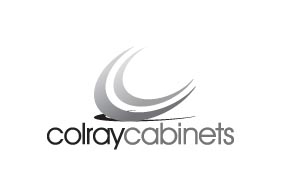Right now, online marketing for moving companies is a must-have. We live in a world where a simple click can set life-changing events in motion.
Digital technology has changed how customers evaluate and opt for moving services.
Beyond word-of-mouth marketing, your moving company’s online presence propels it into success. How can you adopt a human-centric marketing strategy that turns your website into a lead-generation platform?
Stay with us while we delve into the basics of dynamic online marketing tips for moving companies.
What are the Online Marketing Tips for Moving Companies?
As business evolves, you should explore new digital marketing strategies to keep up. We’ll delve straight into what online marketing is for moving companies.
This section will cover the following:
- Laying Digital Foundation
- Personalizing customer interaction
- Data-driven SEO and content marketing
- Leveraging Social Media Insights
- The power of email marketing
- Utilizing predictive analytics
1. Laying the Digital Foundation
The first step to having an online presence is owning a website. While most people think of a website as a mere collection of pages, it’s more than that.
It’s a storefront that provides core information about your business to potential customers. Your website should, however, be informative and user-friendly.
Humans generally have a low attention span. You’ll lose customers’ attention if your website seems too complex at first visit.
For clarity, your website should have:
- User-centric design
- Top-notch performance and speed
- Integration capabilities for analytics and CRM systems
Furthermore, you need a robust infrastructure for your moving company. Integrate technology into the business to create a robust online ecosystem where you utilize email marketing or social media for more personalized customer interactions.
2. Personalizing Customer Interactions
Each customer should feel like they have a relationship with your company. Although they all share similar needs, your customer base is diversified.
They all have different journeys and preferences. Hence, your business should feel more humanized to them. That’s precisely how to turn customers into advocates for your brand.
How can you deepen your interactions and personalize them?
Deep Dive Into Customer Insights
Technology has evolved so much that you can monitor your customer’s behavior. With the right analytics apps, you may gather data on your customer’s preferences, needs, and behaviors.
The best part? You can get these insights at every touchpoint, from social media to website visits.
You can segment your audience based on similar behavior patterns using these insights.
Segmentation for Tailored Experiences
Here’s how to make segmentation work.
Start by creating detailed personas for each customer segment. Examples of personas may include people moving to their first home, companies, or professionals relocating from work.
Once you’ve created personas for the segments, personalize messages to address their concerns. Make each customer feel seen and valued.
Think of it this way: when a company speaks like they know exactly what you need, you feel comfortable trusting them. It doesn’t feel like you are getting a broadcast message.
Engagement Through Personalized Content
Your data and insights on customer patterns may also help you recommend specific services. The recommendation should match their stage in the moving process.
You should also have customized follow-up messages hinged on previous interactions. This shows customers that you are attentive and value them enough to be involved in their individual experiences.
3. Data-driven SEO and Content Marketing
Of course, you have to publish relevant content. But all your competitors probably have their blogs flooded with blogs already. So, how do you stand out?
You need a data-driven and strategic approach to crafting the right messages for your audience. Let’s delve into details on how to maximize your SEO and content marketing efforts:
Research and Keywords
Taking a plunge into SEO with keyword research is like finding a needle in a haystack.
Good luck with that.
Keyword research gives insight into what your target audience searches online. How do you get started with keyword research?
SEO tools.
You’ll be spoilt for choice in terms of keyword research tools. But with these tools, you get to know the moving terms your audience would love to see in your content.
Beyond the keywords, understand the intent driving the keywords. Here’s what we mean. A user may use specific keywords to learn about moving into a new apartment. Others may want to solve urgent moving issues. Knowing the intent ensures you tailor your content to answer questions, inspire action, or solve problems.
Content That Connects
People are driven by value. When your value truly helps people achieve their needs, you’ll get their attention. Produce content your audience will find valuable, like tips for settling into a new neighborhood or a stress-free move.
Case studies is another valuable content idea. People get inspired based on what they see and other customers’ stories. Basically, case studies and reviews humanize your brand by creating trust.
Optimization and User Experience
It’s easy to simplify creating content to serve search engines. What we mean is some content is not easy to understand even though it’s SEO-friendly. Your content is for your audience, not the search engine.
A prominent call to action should guide them to the next step or encourage them to make decisions. Most importantly, make the blog posts readable.
Your content should also easily read on mobile devices or smaller screens. Most people now surf the net using mobile devices. `
4. Leveraging Social Media Insights
Many businesses don’t maximize social media platforms enough. These platforms boast analytics that offer insights into your audience’s behavior. You can get information from customers’ feedback and activities to enhance customer relationships.
How can you make the most of social media insights?
Active Engagement and Listening
Social listening tools are great digital ears when it comes to customers. They generally track what people say about your brand or the moving industry. With this feedback, you can make necessary corrections, answer the right questions, and pay attention to feedback.
Try to respond to messages, comments, and reviews promptly. This shows you value their input, and engagements encourage your client to engage you often.
Analyzing Social Media Data
Social media-informed analytics are pretty detailed. They explain your audience’s demographics, allowing you to create more appropriate content.
What is the content your audience interacts with more? What content do they love to see? This data may inform your choice of content and posting schedule.
Ultimately, tweak your content strategy based on the analytics and preferences of your potential customers.
5. The Power of Email Marketing Automation
Every online business can use this effective marketing tool. Having it in your arsenal improves your lead generation and customer engagement.
How can you harness the power of email marketing to move your company’s online marketing?
Segmentation for Personalized Campaigns
Segmentation is a significant tool for effective email marketing. You can determine the segments using website interactions, previous engagements, or inquiries.
Using power segmentation, you can create tailored messages that speak directly to recipients.
For instance, a client who checked what your packing service entails gets an email on packing strategies.
Lifecycle Email Campaigns
Emails are still as potent as ever because they allow you to nurture leads through the sales funnel. Put simply, you can develop sequences based on the customers’ level of interaction.
Let’s break this down:
- Welcome Series: Send new subscribers welcome emails introducing them to your brand and getting them accustomed to your deals.
- Nurturing Sequences: Create sequences that encourage potential customers to make decisions. These messages should guide them in making the next move.
- Post-Move Follow-Up: Creating automated emails for post-move. The content can range from requesting feedback to offering post-move strategies. Building relationships like this endears your brand to your clients.
Testing and Optimization
You can’t get your email marketing right on the first trial. Most times, you need to test different options.
- A/B Testing: This involves testing different content, send times, or subject lines. You can split your subscribers into two groups and try different email content for them. The one with higher conversion and engagement is more effective.
- Analyze and Adapt: With the data from these campaigns, reform your strategy to reflect your audience preference. Marketing is dynamic. Consequently, you should keep refining your email strategy based on audience preferences.
6. Utilizing Predictive Analytics
Predictive analytics is simply a proactive way to address customers’ needs. It involves anticipating customers’ moves and making informed decisions accordingly.
How can you infuse predictive analytics into your online marketing strategy?
Anticipating Customer Needs
Every industry has peak seasons when demand increases. You can determine such information using historical data. With such foresight, you’ll adjust your demands or marketing to suit the customers’ needs.
It also helps you envisage the next services a customer would require. For example, past interactions with a customer give insight into what to expect. A customer who inquired about moving services is likely interested in your packing services.
Enhancing Customer Relationships
Data patterns explain how customers would react to specific messages. When you know which messages convert or resonate, you’ll most likely hit the nail on the head.
Predictive models will inspire you to re-engage customers when necessary to boost customer retention.
Exploring Innovations in Online Advertising
Digital marketing is quite dynamic. The mode of marketing keeps evolving to unveil better ways to engage your target audience. Hence, your online marketing strategy should include the adoption of these innovations.
Programmatic Advertising Or Paid Ads
You may have considered paid ads in the past, as you should. These innovative ads use algorithms to hone in on your target audience. The algorithm uses factors like demographics or user behavior to ensure your ads reach people looking to move.
Programmatic advertising also delivers accurate content based on clients’ past interactions. For instance, a customer who visits your page may see an ad highlighting your expertise in long-distance moving.
Geofencing Advertising
Alongside local SEO, you may use Geofencing ads to target potential customers within a geo area.
Measuring Success Through Analytics
Analytics play a vital role in moving companies’ online marketing. Through analytics, you can make data-driven decisions that enhance your marketing strategies. If you are looking to improve customer satisfaction, consider the following:
Tracking Key Performance Indicators (KPIs)
KPIs help with traffic management and engagement. It shows you the number of visitors you get and how they interact with each page. Armed with this information, you’ll create a better user experience for your client.
In addition, KPIs track your conversion rates. This data reveals how often your customers perform specific actions when they visit your page. With this, you’ll know exactly what you need to improve on.
Learning from Customer Feedback
The best place to get information on what your customers love is from them. Take surveys and gather online reviews to know what your customers expect. Such inputs are invaluable because you can gauge how well your services meet their needs.
Key Into Online Marketing For Moving Company with Slinky
Moving is incredibly personal for people. Hence, succeeding in the moving industry hinges on how well you relate to customers. You need an effective marketing strategy to nurture leads and create content that resonates with your customers.
It takes the help of a professional to seize market opportunities and create such battle-tested strategies. Slinky is a lynchpin in the digital marketing industry. We’ll research your audience and competitors to craft a plan that gives you an edge. Our experts understand all the tricks to boost revenue and convert leads. With their help, we can grow your business to any stage.
We don’t expect you to take our word for it because our past customers say it better. Click here to see how we’ve helped people in the past.
We can replicate these success stories with our proven online marketing for moving companies. All it takes is one call.

























